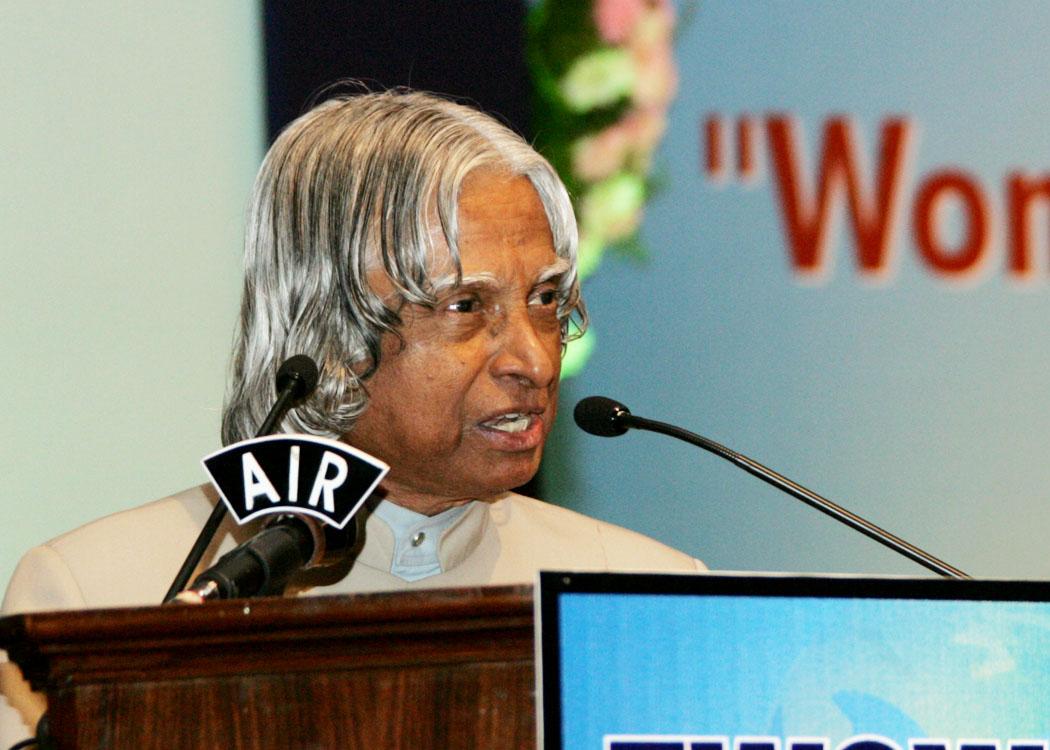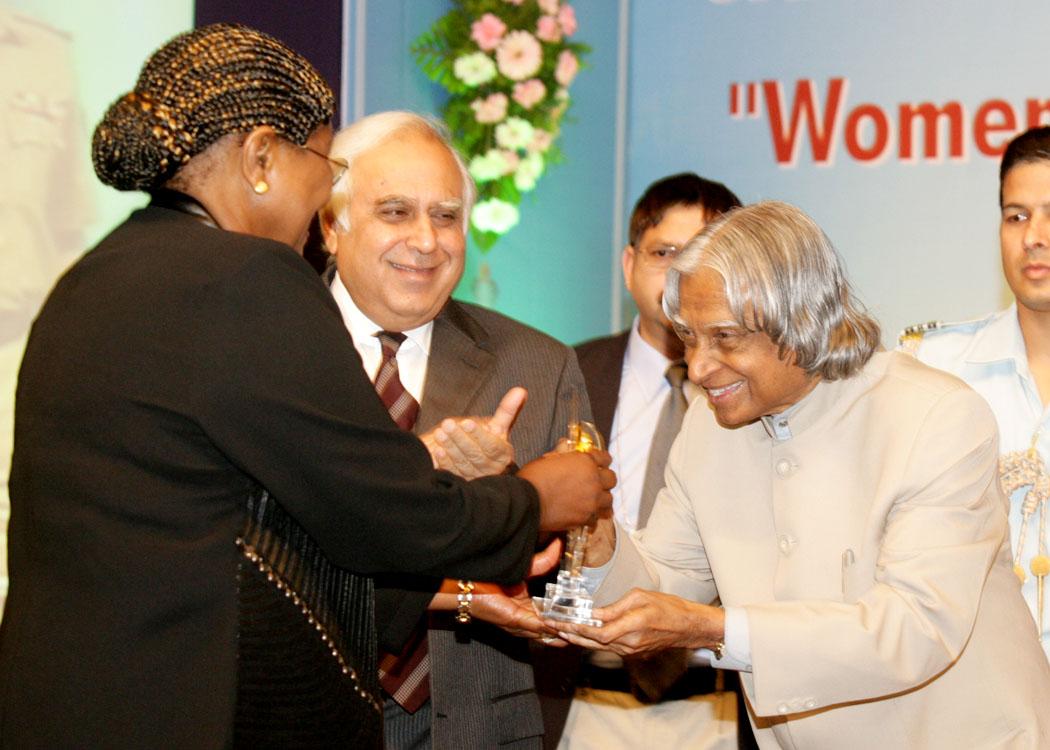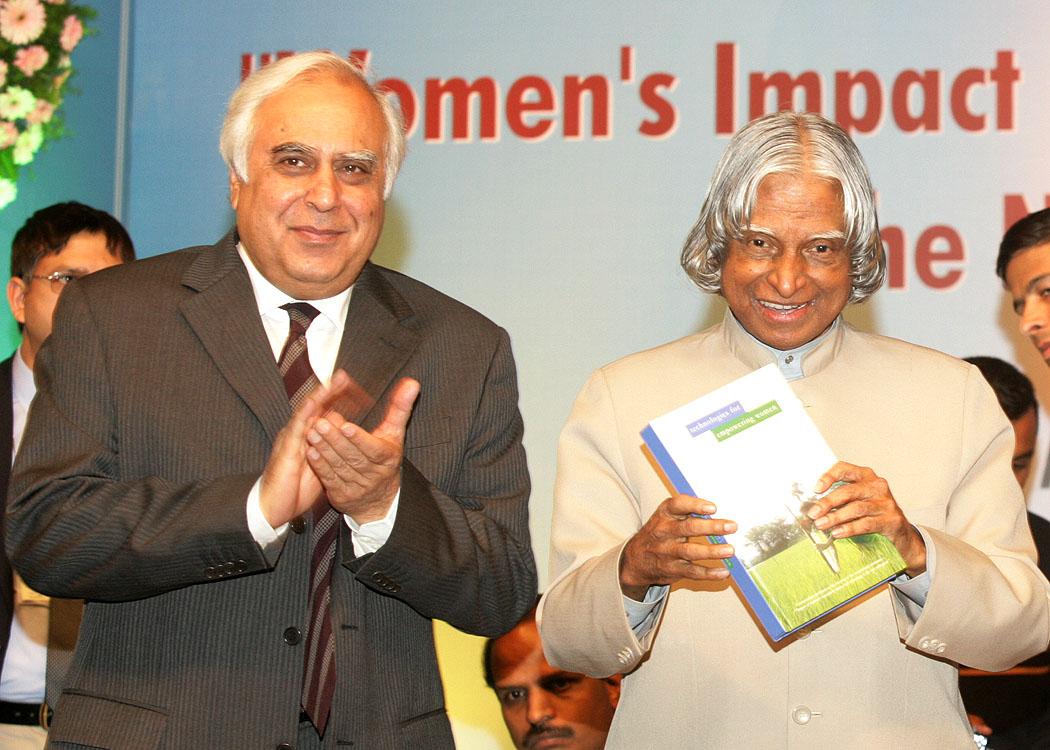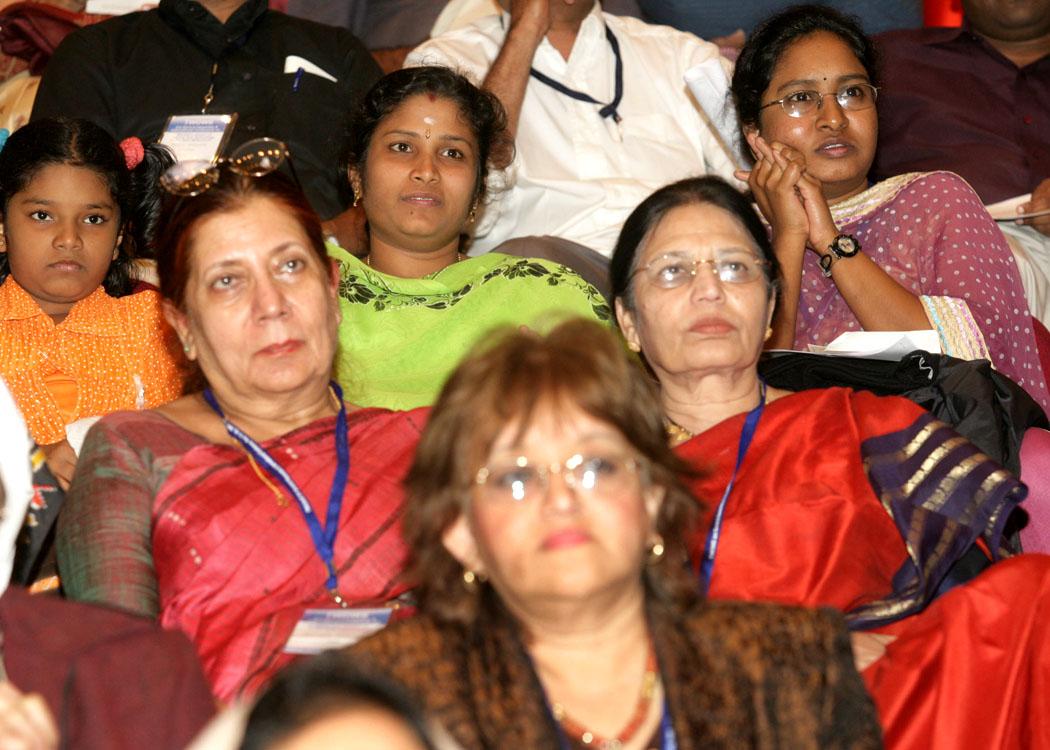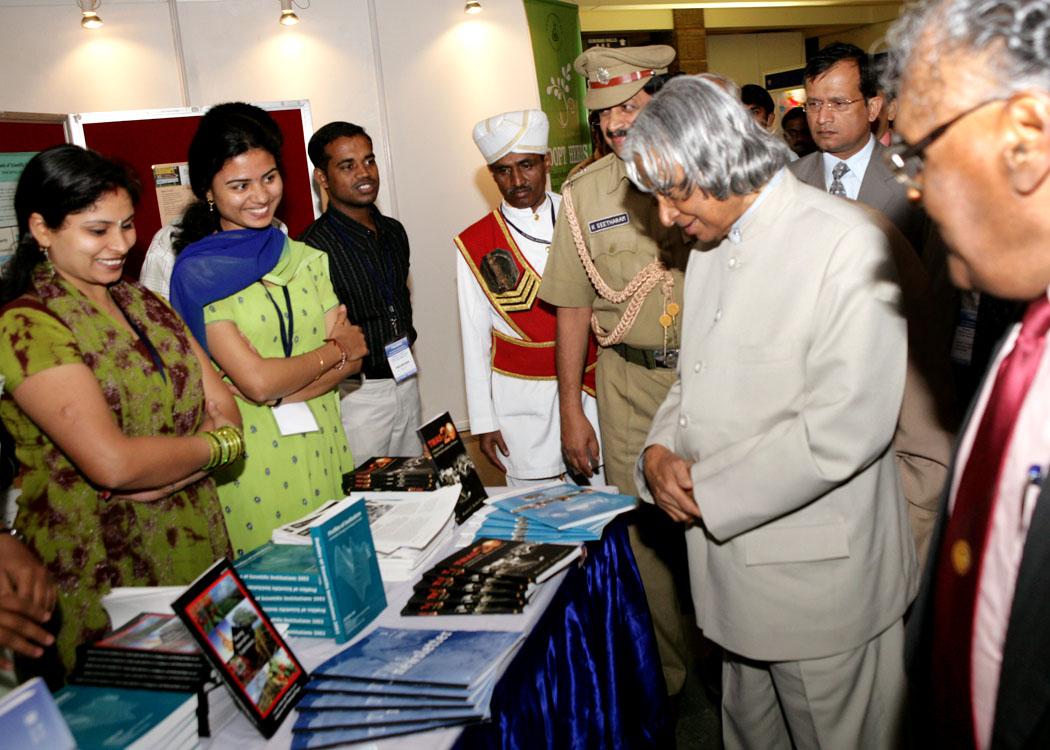Address At The General Assembly Of Third World Organization For Women In Science And Conference On Impact Of Women'S Research In Science And Technology In The New Millennium, Bangalore
Bangalore : 21-11-2005
Harnessing the Women Power in Science
I am delighted to participate in the Inauguration of the General Assembly of Third World Organization for Women in Science and the Conference on Impact of Women?s Research in Science and Technology in the New Millennium. My greetings to the members of Department of Science and Technology, Prof C.N.R.Rao, members of Third World Academy of Science, scientists, academicians and distinguished guests. I would like to discuss on the topic "Harnessing the Women Power in Science".
Emerging women
While talking to you, I am reminded of Mahakavi Subramaniya Bharatiar, who in 1910 composed the poem envisioning women of India:

This beautiful poem means:
Emerging women
She walks with raised head, with her eyes looking straight,
She has her principles, unafraid of anybody!
- She has a lofty and knowledge based pride,
Women of excellence, don't falter from the chosen path.
She drives ignorance away. She welcomes the bliss of life.
With learned mind, this is the Dharma of emerging woman.
The dream of the poet for emerging women aptly suits the women scientists participating in this seminar. Now, I would like to discuss about some of the great women scientists and their contributions to society. Particularly the life of Madam Curie who got two nobel prizes, will be a great inspiration.
Madam Curie - a dream for every women scientist
Madame Curie was born in Warsaw, Poland in 1867. Her parents were teachers, and she learned at an early age the importance of education.
Her mother died when she was young. Her father was punished for teaching Polish - which had been made illegal under the then Soviet government. Manya, as she was called, and her sisters were forced to look for jobs for their living. After a couple of failed attempts, Manya became a tutor to a family in the countryside outside Warsaw. She enjoyed her time there, and was able to send her father money to support him, and also send some money to her sister Bronya in Paris who was studying medicine.
Bronya eventually married another medical student and they set up practice in Paris. The couple invited Manya to live with them and study at the Sorbonne - a famous Parisian University. In order to fit in better at the school, Manya changed her name to the French "Marie." Marie studied physics and mathematics and quickly received her masters' degrees in both subjects. She remained in Paris after graduation and started research on magnetism.
For the research she wanted to do, she needed more space than her small lab. A friend introduced her to another young scientist, Pierre Curie, who had some extra room. Not only did Marie move her equipment into his lab, Marie and Pierre fell in love and married.
A friend of the Curies, A. Henri Becquerel, had been playing with recently discovered properties of the element uranium. He talked to Pierre and Marie about those properties and they became interested in them too. Marie Curie set about investigating the effect, which she named "radio-activity" for her Doctorate research.
Marie Curie checked many other elements to determine whether they too were radioactive. She found one, thorium, and also came across a source of radiation in a mixture called "pitch-blend," which was much more powerful than either thorium or uranium.
Working together, it took Marie and Pierre four years to isolate the radioactive source in the pitch-blend. Marie named it radium. For the discovery of radium, Marie and Pierre won a Nobel Prize in Physics in 1903, which they shared with their friend A. Henri Becquerel. Shortly, Marie found that what she had discovered was not pure radium, but she was able to isolate the element itself after quite a struggle. For this work, she was given the Nobel Prize for Chemistry in 1911.
During her work, Marie discovered radiation could kill human cells. She reasoned that if it could kill healthy human cells, it could kill diseased human cells and went about isolating radium for use in killing tumors.
In 1906 Pierre Curie was offered the position of director of the Physics Laboratory at the Sorbonne. Before he could take the position, however, he was run over by a carriage and killed. After her husband died, Marie was offered and took the position, the first woman to become director of a research laboratory.
During the first World War, Marie Curie went to work for the French designing and building X-ray machines. Knowing that moving soldiers to a hospital before they needed surgery was not always possible, she designed the first mobile X-ray machine and traveled with it along the front lines during the war.
On July 4, 1934, Marie Curie died in Paris, killed by her own experiments. She died of radiation poisoning and may have been the first person to do so. Marie Curie had brought herself up from poverty, struggling to get her education and succeeding brilliantly. The work she did, she did with patience, often getting results only after years of careful experimentation, while struggling for money to support her work. For her struggles, she received two Nobel Prizes - the first woman to win even one. Through the knowledge she gained, thousands of lives have been saved. The courage and perseverance shown by Madame Curie in her pursuit of scientific mission and achieving successes are indeed remarkable and stimulating.
Women empowerment in India
India has a long tradition of having given equal or more opportunity to women to excel in science. Indian women had voting rights far far earlier than most developed countries. Some of them were celebrated warriors and rulers of Kingdoms in India. The names of Jhansi Rani and Rani Mangamma come to mind while we talk about the rulers, more relevant to this meeting are some of the scientists and natural philosophers who contributed immensely to science. In ancient India Gargi who was born 3000 years back, Leelavati of the 12th Century and Maritrayee stand out. Somehow, during the foreign occupation of India the role of Indian women in science had been somewhat subdued. The independent India started to see the resurgence of Indian women in science. I am personally aware of some of the more recent women scientists who had a crucial role in the development of science and technology of modern India.
Sientists with technology missions
Smt Rohini Devi is a Seniormost woman Scientist working in DRDO and is known to me for over two and half decades. She joined DRDO immediately after her college in the year 1977 from IIT Chennai and has been working for the last 28 years towards the development of advanced processed technologies, establishment of facilities and development of state-of-the art products which have to withstand the rigours of re-entry. Multi-directional pre-form technology is a closely guarded secret of the western world. By pooling up the research talent in the country through a consortium approach and nurturing the young minds she could successfully develop products which have been put to operational use. One of the interesting products which she developed is the carbon brake disc for LCA. The project team was wavering whether to follow the import option or to continue with the indigenous development with a strict time frame. All over the world it has been reported that such a brake pad has not been developed apart from few developed countries. One of the leading manufacturer from the west challenged the programme that it will be nearly impossible to make in the country and they were offering a total solution at a very heavy price. Instead the project team took the courage and encouraged the indigenous effort being piloted by Mrs Rohini Devi. As expected in many such missions initially the product did not give the required wear rate though it was meeting the required brake performance. That is where the teams headed by Mrs Rohini Devi toiled with the science and technology and through perseverant scientific endeavour overcame the barriers and realized the wear rate prescribed by the project. This technology solely developed in the country has numerous spin-offs and applications in the civilian sector. Now the same team is working on carbon nano-tubes and also developing functionally graded material which will eventually revolutionize the materials used in aerospace and defence.
This shows the courage innovative spirit and commitment of a women scientist to "make the impossible, possible".
The AKASH missile system is guided by Phased Array Radar - RAJENDRA. This radar can simultaneously track multiple aircraft and also guide multiple missiles towards these targets. The crucial technology to achieve this capability is the 'phase shifter', when integrated in large numbers for electronic beam steering. RAJENDRA Radar has 4500 phase shifters. These phase shifters were not commercially available because of restriction from developed countries. This phase shifter was designed and developed by Prof Bharati Bhat, a well-known and respected scientist from Centre for Applied Research in Electronics (CARE) of IIT, Delhi, with her team. Today, India has the Phased Array Radar technology which is on par with that available in developed countries.
One of the toughest endurance tests for any human is to undertake space travel. It is commendable that a scientist who was born in a sleepy town in Haryana took up to aeronautical engineering and was fascinated by the challenges of space missions. While pursuing research in aeronautical engineering she always dreamt of being called the child of the galaxy. The scientist in her made her a perfectionist and dedicate herself to be the first Indian women to be a member of the Space Shuttle. While on the space shuttle she flew for an incredible 760 hours and was conducting advanced scientific experiments in space. Kalpana and her team conducted more 80 experiments involving more than 70 scientists world over. Their major investigations were towards investigating space, life and physical sciences and to understand the life forms in near zero gravity environment. Kalpana Chawla is an example of how single minded dedication can lead to realization of childhood dreams, however complex and tough the pursuits are.
Top
Scientists with a societal mission
Subsequently at Delhi I met two very senior Air Force and Naval Officers, Air Marshal (Mrs.) P. Bandopadhyay, Director General, Medical Services (Air) and Surg. Vice Admiral (Mrs.) Punita Arora, Director General, Medical Services (Navy). They are doing pioneering work in medical field. I would also like to mention about Dr Shanta of Cancer Institute, Chennai who was recently conferred with the Raman Magsaysay award. I am familiar with her work in cancer research. She was responsible for setting up the Radiation Oncology Department in Cancer Institute and organized the first-ever hospital tumour registry in India. She also established the first paediatric oncology unit.
I have given you some examples of the Indian scenario, but I am sure there are many women scientists working both in government and private organizations making important contributions to the development of science and technology in the country.
Conclusion: Empowerment
When the child is empowered by the parents, at various phases of growth, the child transforms into a responsible citizen. When the teacher is empowered with knowledge and experience, good young human beings with value systems take shape. When individual or a team is empowered with technology, transformation to higher potential for achievement is assured. When the leader of any institution empowers his or her people, leaders are born who can change the nation in multiple areas. When the women are empowered, society with stability gets assured. When the political leaders of the nation empower the people through visionary policies, the prosperity of the nation is certain. The medium for transformation to developed India is the empowerment at various levels with power of knowledge. If the women are empowered to do science, I am sure state-of-the-art research will follow and science and technology will find application in all our endeavours.
I inaugurate the General Assembly and the Conference on Impact of Women's Research in Science and Technology in the New Millennium. I am sure that this General Assembly will come up with very innovative and practical ideas to make the society benefit from women scientists. The number of women scientists world over has been growing at a faster pace. Removing any impediments that come in the way of our harnessing this vast pool of brilliant, hardworking and dedicated knowledge power, should be the focus of this General Assembly.
My best wishes to the organizers for success in their mission.
May God bless you.

